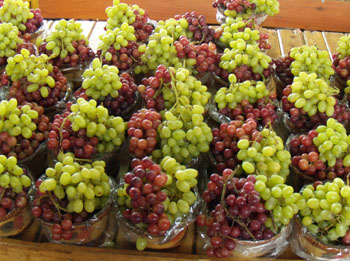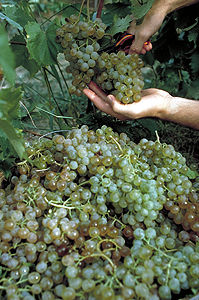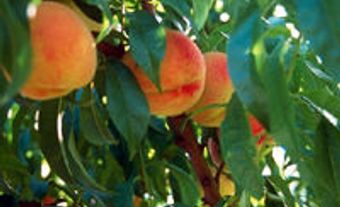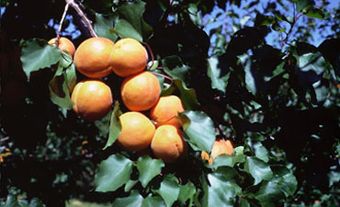Description
Vitis species are woody climbing vines that produce clusters of berries. There are about 60 Vitis species found mostly in temperate regions in the Northern Hemisphere. Vitis vinifera, the principal grape species cultivated for fine winemaking, is native to the Mediterranean and southwestern Asia. Several Vitis species are native to North America, from Canada to Mexico. In cultivation, V. vinifera wine grapes are commonly produced on grafted vines whose rootstocks were derived from North American species such as V. riparia and V. rupestris, which impart resistance to pests and tolerance to adverse soil conditions. Fruit-producing hybrids of V. vinifera and North American species were first developed for their resistance to the root aphid phylloxera. However, as many hybrids are more winter hardy than V. vinifera they are the most common cultivars planted in areas having cold winter climates. The quality of wines produced from hybrid cultivars is generally considered inferior to that from V. vinifera.
Production
In Canada, the two main commercial grape-growing areas are southern Ontario's Niagara Peninsula and the Okanagan and neighbouring Similkameen valleys in south-central British Columbia. Smaller industries have been established in southern Ontario and Québec, in coastal British Columbia including Vancouver Island, and in the maritime provinces of New Brunswick, Nova Scotia and Prince Edward Island. Until the late-1980s, the Canadian wine grape industry was based on hybrid varieties grown for consistent production and high yields, but these produced mostly mediocre quality wine. With the advent of the North American Free Trade Agreement signed in 1988, and with the simultaneous occurrence of warmer climatic conditions, there was in the late 1980s a rapid conversion of plantings in British Columbia and Ontario to noble V. vinifera varieties. The main V. vinifera varieties grown in Canada are Chardonnay, Merlot, Cabernet Franc and Riesling.
See also Crop research.

 Share on Facebook
Share on Facebook Share on X
Share on X Share by Email
Share by Email Share on Google Classroom
Share on Google Classroom





